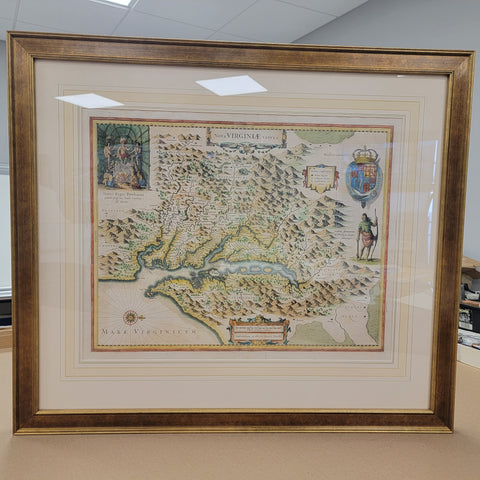Proper Framing of Antique and Rare Maps

Over the years, we have had many collectors, dealers, museums and the general public bring us maps for framing. Whether it was a 15th century map or a one from a recent atlas, people enjoy the depth of detail and beauty of maps. People also buy maps to show the places they have visited.
It's for this reason, we are constantly framing maps and using preservation methods to ensure their longevity. Ironically, maps of recent age are more likely to deteriorate than early maps. The reason is that maps within the last 150 or so years are usually made with wood pulp paper leading to aging and foxing in the paper.

Earlier maps can also be harmed and affected with improper framing. In a recent case, a collector from New York wanted me to reframe a map be bought already framed from a dealer. He was concerned with some bleed through in the map.
Once we received the framed map, we took it apart. The map was mounted with acidic tape onto foamcore backing, As I have stated in previous blogs, please avoid using any foamboard material in the framing. Only used a double layered backing of 100% rag before archival polypropylene rigid boards.
Our business was able to neutralize the antique map but because of the coloring, we avoided doing a careful pH neutral chemical bleach.
Regardless of the framing, prevent the framed map from hanging in direct sunlight. Every day the sun hits the map, that can cause colors in the inks and watercoloring to show fading over time. Of course, with minimal grade glass, the effects will be more noticeable alot sooner.
99% UV glazing, acrylic or glass, is required for framing. Make sure your framer uses this grade glass and not a knock off. Many framers will cut back to save money not realizing the harm substandard glazing does to antique paper.
Finally, please make sure your framer uses 100% reversible hinges! These can take the form or mylar corners, polyester sheets or strips. We make our own strips to ensure they conform to the antique map or print.
Never use any tape unless its true conservaton grade reversible tissue and the paper weight is appropriate.

Our firm had to reframe several antique maps for a known west coast museum because their framer used underweight hinging which caused the maps to break from the hinges and slide within the mats. Thankfully, the maps were't damaged, but this action could have had negative consequences.
Wherever you take your maps for framing, PLEASE make sure they used the required materials and techniques to protect your print or map. Let them demonstrate what they would do and how they would do it.
Whether an old map or one printed last year, Museum Framing always explains in detail our framing techniques and materials. You have invested money and have sentimental feelings with your purchase, let the framer know you want it framed correctly to last without any harm.
